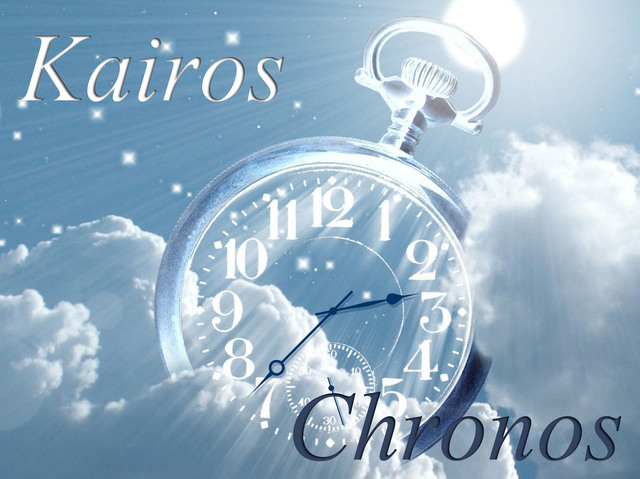Michael Lowenstein, Ph.D., CMC Thought Leadership Principal, Beyond Philosophy
First, a little dictionary diving is required. The word ‘chronos’ may be familiar to some. In ancient Greek, it means “time” or “order”, like chronology or sequence. Kairos is probably less well-known. It means, essentially, doing something at the right instance, in other words a moment of truth or when something of significance happens. Chronos is quantitative. Kairos is qualitative. Both are essential in customer experience, and particularly for the role of employees in delivering superior, differentiated value (or in undermining or destroying it).
Employees’ actions, including expressing themselves face-to-face and through digital means, directly and indirectly impact much of what we understand about customer experience-based emotion and memory, leading to downstream behavior. For example, even in this age of greater customer self-service, each customer service representative (CSR) across the United States still handles an average of over 2,000 customer interactions each week. If CSRs are not aligned with the customer management strategy, and delivering value in a timely and as expected manner — indeed, are not directly involved with creating and executing the strategy — it can represent thousands of opportunities to put customers at risk or lose them.
These centers of customer interaction now represent the principal touch-point with customers; and beyond technology, they have the capability to generate and manage a continuous flow of customer information, and to increase customer loyalty and advocacy behavior. Getting the most out of employees in customer contact centers, and anyone else in the organization with front line customer contact responsibilities, will require change. In many companies, this means significant, sometimes wrenching change to achieve chronos and kairos.
For customer management and high-quality experience and value delivery to be optimized, one of the changes that companies will have to institute is to start focusing on people, all of the employees within the enterprise. Hal Rosenbluth, former CEO of the highly successful, multibillion-dollar travel management company, Rosenbluth International (which was merged with American Express Travel Related Services several years ago), said in his book,The Customer Comes Second: “Companies are only fooling themselves when they believe that “The Customer Comes First.” People do not inherently put the customer first, and they certainly don’t do it because their employer expects it. We’re not saying choose your people over your customers. We’re saying focus on your people because of your customers. That way, everybody wins.” Over the years, I’ve applied this quote to identify core elements of “people first” employee experience and creating ambassadorial employee behavior. What Rosenbluth said holds up two decades after first being published.
Tremendous investments have been made on technological innovations — IVR systems, call routing, multi-media integration and the like — yet investment in people, and processes to support them, has been stagnant, lagging behind other efforts. To deliver on the promise technology offers in customer relationships, organizations need to prioritize staff performance. People have to be trained in what to do and when to do it (chronos and kairos), provided with the tools and empowerment to deliver value, given feedback about how they’re doing and rewarded if they are doing well.
Tom Peters has said that, in the future: “Most work will be done by project teams. The ˜average’ team will consist of various people from various ˜organizations’ with various skills. Networks of bits and pieces of companies will come together to exploit a market opportunity.” Such can certainly be the case with customer loyalty; service and relationships; and customer recovery programs. There are several advantages to networked, team-based structures as opposed to traditional hierarchies as companies strive to create value for customers. They include better, more quickly shared information; greater staff decision agility, initiative and empowerment (kairos); faster response time (chromos); and greater customer contact, as well as:
– Flattened, matrix-based organizational structures for greater efficiency
– A minimization of non-value-added functional activities and better use of staff time and talent
– Individual ownership of performance, especially around customer experience and value delivery
– A greater opportunity for self-management (enablement and empowerment) and a wider scope of work in each job
– A linkage between performance objectives—and individual and team performance—to customer experience and loyalty behavior
– More targeted employee training and skill development
Creating a chronos and kairos culture within the organization that nurtures loyalty, commitment, advocacy and productivity from the moment the new hire walks through the door and throughout the life cycle of the employee will go a long way to sustaining customer loyalty behavior. The good news is that employees, particularly those in customer service, seek trust and trustworthiness; and they desire to be active contributors to that effort.
Republished with permission from CustomerThink.com
| Michael Lowenstein provides strategic consulting, research design and in-depth, leading-edge analysis that helps clients deliver outstanding business results through deeper customer experience, communication, relationship, employee and brand equity insights. Beyond Philosophy provide consulting, specialised research & training from our Global Headquarters in Tampa, Florida, USA. |



